The common phrase that someone “slept like a baby” implies that babies sleep deeply and peacefully. But if you’ve ever actually spent time around a baby, you’ll know that while babies sleep a lot, they also wake up a lot. And cry a lot. And struggle to settle back down to sleep.
For tired new parents, dealing with a newborn’s sleep schedule can feel totally overwhelming — especially because there’s a ton of conflicting information out there about how to make sure your baby gets enough sleep and what sleep schedules are appropriate at each age. So what do you need to know about babies and sleep?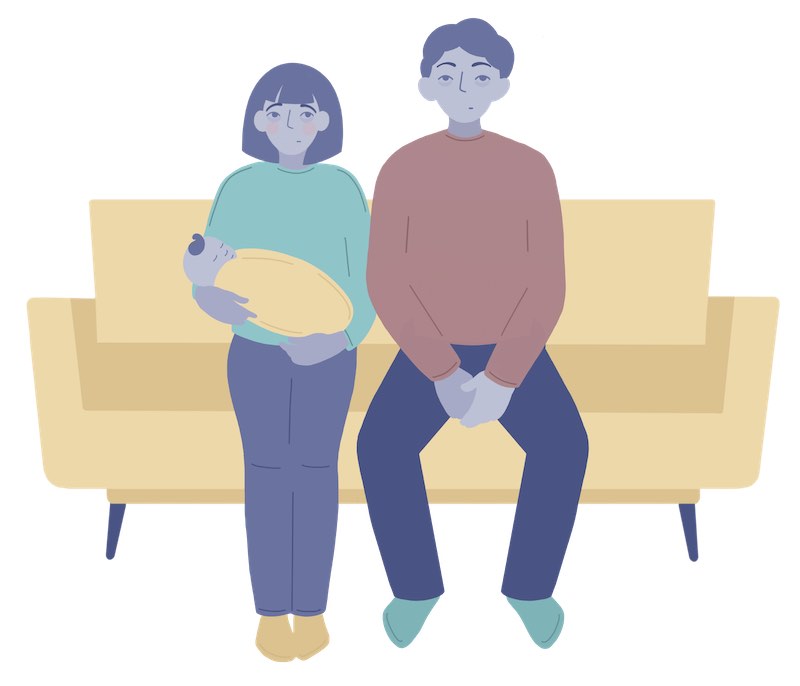
This piece will cover everything parents and caregivers need to know about baby sleep, from newborns to 18 months old. That includes guidelines for how much a baby should sleep at each age, when your baby should be able to sleep through the night, how to know if your baby is sufficiently rested, how to figure out an appropriate nap schedule, when to turn to your pediatrician or a child sleep consultant, and the latest guidelines on safe sleep practices for babies.
Obviously, all babies are different and there is no one-size-fits-all solution to getting a baby to sleep well. But knowing what experts recommend can help you make informed decisions, including deciding whether or not you should seek help from a medical professional to assess your baby’s sleep habits.
RELATED: Best Organic Mattresses
How Much Sleep Does My Baby Need?
The American Academy of Sleep Medicine (AASM) doesn’t have official guidelines for newborn sleep (that’s babies age 0 to 3 months). Stanford Children’s Health website says, “The average newborn sleeps much of the day and night, waking only for feedings every few hours. It’s often hard for new parents to know how long and how often a newborn should sleep.”
| Age | Recommended hours of sleep in a 24-hour period |
|---|---|
| 0-3 months | 14-17 |
| 4-12 months | 12-16 (including naps) |
| 1-2 years | 11-14 (including naps) |
The site also provides a more detailed breakdown of baby sleep patterns, including how much sleep occurs during the nighttime versus during the day:
| Age | Total Sleep Hours | Total Hours of Nighttime Sleep | Total Hours of Daytime Sleep |
|---|---|---|---|
| Newborn | 16 hours | 8 to 9 | 8 |
| 1 month | 15.5 hours | 8 to 9 | 7 |
| 3 months | 15 hours | 9 to 10 | 4 to 5 |
| 6 months | 14 hours | 10 | 4 |
| 9 months | 14 hours | 11 | 3 |
| 1 year | 14 hours | 11 | 3 |
| 1.5 years | 13.5 hours | 11 | 2.5 |
| 2 years | 13 hours | 11 | 2 |
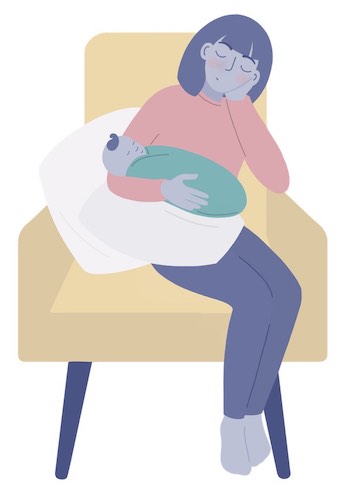
As you can see, babies’ sleep patterns can change significantly over the course of just a few months.
“During the first 12 months, babies develop quickly, and their sleep patterns change rapidly as well,” the Cleveland Clinic website explains. “It is also important to understand that all babies briefly awaken several times (up to 6) a night. Some babies are able to soothe themselves back to sleep after they wake up. Other babies learn to signal their parents for help (ie, rocking, holding, cuddling) to settle them back to sleep if they wake up in the middle of the night.”
Sleeping the number of recommended nightly hours on a regular basis is associated with positive outcomes including:
- Improved attention, behavior, and learning
- Better memory
- Better emotional regulation
- Higher quality of life
- Better mental and physical health
On the other hand, experts believe that sleep deprivation in early childhood can contribute to some developmental issues and health problems later on, including:
- Attention issues
- Behavioral issues
- Learning problems
- Increased risk of accidents or injuries
- Increased risk of hypertension, obesity, diabetes, and depression
“More than a third of the U.S. population is not getting enough sleep, and for children who are in the critical years of early development, sleep is even more crucial,” Dr. Nathaniel Watson of the American Academy of Sleep Medicine said in a press release. “Making sure there is ample time for sleep is one of the best ways to promote a healthy lifestyle for a child.”
When Should I Expect My Baby To Sleep Through The Night?
Because all babies are different, there’s no real guideline for when your baby “should” be able to sleep through the night.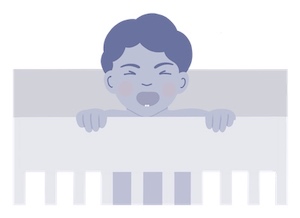
“Most babies do not begin sleeping through the night (six to eight hours) without waking until about 3 months of age, or until they weigh 12 to 13 pounds,” the Stanford Children’s Health website explains. “About two-thirds of babies are able to sleep through the night on a regular basis by the age of 6 months.”
Some babies might experience sleep regressions — yep, that’s a real thing, as the University of Washington School of Public Health website explains. Sleep regression is when a baby who was sleeping for long stretches at a time suddenly starts waking up much more often.
The good news is that regressions are temporary, usually lasting between three and six weeks. The less good news is that sleep regressions can happen more than once. They are most common around four months, but can also happen at eight months, 11 months, and 18 months.
The Alaska Sleep Clinic notes that there are a number of reasons why your baby might exhibit a different sleep pattern at four months. For example:
- Your baby is experiencing a growth spurt.
- Your baby is teething, which causes fussiness.
- Your baby is becoming more aware of the world around them, meaning they want to stay awake and interact with things.
Also, your baby might regress during sleep if you recently stopped swaddling them. According to safety guidelines listed on the Cincinnati Children’s Hospital website, you should stop swaddling a baby who is old enough to roll over onto his or her stomach, which usually happens when they are about four months old. (That’s because a swaddled baby who rolls over will not have their arms free to push their head up from the mattress, creating a suffocation risk.) However, babies experience something called “Moro reflexes,” which can jerk them out of sleep. If they are no longer swaddled to help mitigate those reflexes, they might wake up more often.
How Can I Tell If My Baby Is Getting Enough Sleep?
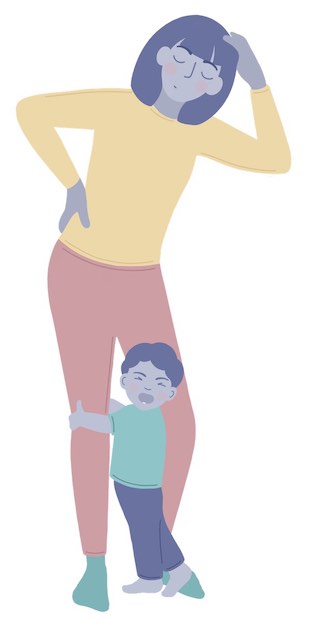 If your baby or toddler is sleeping the recommended amount each day (or close to it), they are probably getting enough rest. But how can you tell if that’s not the case, and your baby needs more sleep to feel their best?
If your baby or toddler is sleeping the recommended amount each day (or close to it), they are probably getting enough rest. But how can you tell if that’s not the case, and your baby needs more sleep to feel their best?
According to Sleep.org, if your baby or toddler is not getting enough sleep, you might notice some of the following behaviors:
- They are often cranky, whiny, or fussy, particularly late in the day.
- They act very clingy.
- They fidget or seem hyperactive.
- They have trouble sharing with siblings or friends or taking turns.
- They are not talkative.
- They wake up groggy.
- They fall asleep again right after being woken up.
- Older toddlers want to lie down or take naps during the day.
- They fall asleep during short rides in the car.
Also, babies who are sleep deprived or tired and need to sleep might:
- Rub their eyes
- Pull their ears
- Flutter their eyelids
- Yawn a lot
“Putting your baby to bed when he or she is showing these signs usually allows them to fall asleep more quickly and begins to establish a bedtime routine,” the Cleveland Clinic says.
What Factors Might Be Stopping My Baby From Sleeping Well?
If your baby is not sleeping well, a number of factors could be behind this.
It’s usually helpful to take notes on your child’s sleeping habits for a couple of days to see if anything jumps out at you — for example, are they taking a really long nap in the afternoon and then struggling to fall asleep at night? Do they wake up early in the morning when the garbage trucks are driving down your street? See if you can correlate your baby’s sleep issues with any specific events, and then do what you can to mitigate the issues (such as shortening their afternoon nap or putting a white noise machine in their bedroom to drown out street noise).
One important consideration is your baby’s sleep environment. According to Nationwide Children’s Hospital, your baby should sleep in a cool, dark, and quiet room. Here are some tips for making that happen:
- If there is a window in your baby’s room, consider installing blackout shades or other solutions for keeping the room dark when your child is sleeping. This is especially helpful during daytime naps and when you are putting the baby to bed before the sun goes down.
- You might find that a fan or a white noise machine can help keep your baby’s room quiet while they sleep, which will stop noises from the street or the rest of the household from disturbing them. A fan or air conditioning unit can also help keep the room cool.
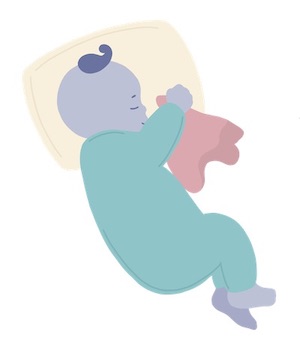
Beyond your baby’s sleep environment, Sleep.org explains there are a number of other reasons why toddlers may not get enough sleep:
- Bad dreams. According to Sleep.org, “Nightmares tend to crop up during the toddler years, as this is when vocabulary and imagination are rapidly developing.” If your toddler wakes up from a bad dream, the Cleveland Clinic recommends that you comfort them and stay with them until they fall asleep again in their own bed. If your toddler is frightened by their dream, you might also consider using a nightlight, keeping your toddler’s bedroom door propped open, or letting your kid snuggle with a security blanket to help them feel better.
- A changing or inconsistent schedule. Small children don’t do well when their schedules have been disrupted. So as tempting as it might seem to let your little one stay up late to greet a visitor, for example, try to prioritize their bedtime routine whenever you can. If your family is going through other changes — like moving house, welcoming a new member, introducing your toddler to daycare or a new caregiver, and so on — just know that it might take a while for your toddler to get used to these changes. Maintaining consistency can help them maintain a regular sleep schedule.
- Getting overexcited at bedtime. “Setting a quiet tone before bedtime can help, as too much pre-sleep excitement can make it hard for toddlers to settle down,” Sleep.org explains. “Play soft music, put away any loud toys, and consider reading a book together. Once in bed, don’t engage a toddler in any new games. It’s important to distinguish sleep time from playtime.”
For an older child, HealthyChildren.org says that “It’s OK to let your child sleep with a teddy bear, special blanket, or some other favorite toy. These often help children fall asleep — especially if they wake up during the night. Make sure the object is safe. Look for ribbons, buttons, or other parts that may be choking hazards. Stuffing or pellets inside stuffed toys can also be dangerous.”
RELATED: A Parents’ Guide To Helping Children Sleep
If your baby or toddler is having consistent trouble falling or staying asleep, it’s worth speaking with your pediatrician. It might be that they are teething, have an earache, or are experiencing some other physical issue.
Should My Baby Be On A Nap Schedule (And What Does That Look Like)?
Many parents find that a nap schedule is extremely helpful in ensuring their baby gets enough rest.
According to the Mayo Clinic, babies usually sleep and wake constantly during the first couple of months. As they get older, they sleep for longer periods of time between feedings, and their sleep patterns usually become more predictable.
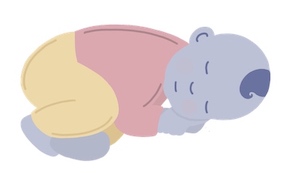 The Mayo Clinic also notes that baby napping schedules vary, but generally speaking for babies aged four to 12 months: “After the newborn period, your baby will likely nap at least twice a day — once in the morning and once in the early afternoon. Some babies also need a late afternoon nap. Many babies nap a total of three or more hours during the day.”
The Mayo Clinic also notes that baby napping schedules vary, but generally speaking for babies aged four to 12 months: “After the newborn period, your baby will likely nap at least twice a day — once in the morning and once in the early afternoon. Some babies also need a late afternoon nap. Many babies nap a total of three or more hours during the day.”
The Baby Sleep Science website, which is run by child sleep consultants Meg Casano and Erin Evans, offers the following guidelines for infant napping:
- A baby aged four to six months might take three naps a day, with 2 or 2.5 hours spent awake between each nap. The last nap of the day should be the shortest.
- When your baby is six to nine months old, work towards a two-nap schedule. Baby Sleep Science recommends something called the 2-3-4 ladder schedule. That means your baby would be awake for two hours, then nap, then awake for three hours, then nap, then awake for four hours, then go to bed for the night.
- A nine- to a 15-month-old baby will eventually transition from two naps to one nap (usually the transition happens somewhere between 12 and 15 months).
What Does A Healthy Naptime Or Bedtime Routine Look Like?
Your baby’s ideal bedtime routine will vary depending on how old they are, what time they go to sleep at night, and so on. Once your baby is regularly sleeping through the night, Sleep.org says that “a quiet, relaxing nighttime ritual, starting at the same time every evening, will calm your baby’s sympathetic nervous system, making it easier to sleep.”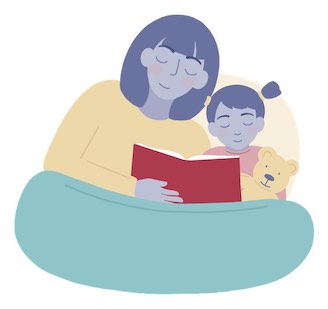
Routines can vary in length but experts say it’s generally 20 to 30 minutes for one child and 45 minutes for twins. Studies show that bedtime routines contribute to better sleep in babies and kids — including longer time spent sleeping and fewer and shorter nighttime awakenings.
Many parents like to use a simple, three-step routine such as bathing their child, reading them a book, and then putting them to bed. (Research shows that children who regularly read with their parents as part of their bedtime routine show improvements in language.) Other options for a nighttime routine including listening to soft music or singing a lullaby together.
What’s most important is that the routine is consistent. Naptime routines can also help settle your baby in for a nap. A routine for putting your baby down for a nap should be shorter than the full bedtime routine, and could including something like closing the blinds or curtains and reading one quick story.
RELATED: Best Mattress Protectors
What’s A Child Sleep Consultant, And How Can They Help?
A child sleep consultant, or pediatric sleep consultant, is someone trained to help children with sleep issues. Sleep consultants are not necessarily medical professionals, though there are a number of licensed physicians, nurses, and other medical professionals who also work as sleep consultants.
Sleep consultants can help you tackle any number of issues your baby or toddler is having with sleep, and they can work with you in-person or through remote consultations over the phone or video chat. Parents may work with a sleep consultant to address things like:
- Establishing a bedtime routine for your baby or toddler
- Getting your baby to sleep through the night
- Getting your toddler to nap on schedule
- Resolving nightmares in toddlers
- Helping your baby or toddler sleep on vacation or in other unfamiliar places
- Transitioning from three naps to two, or two naps to one, or one nap to no naps
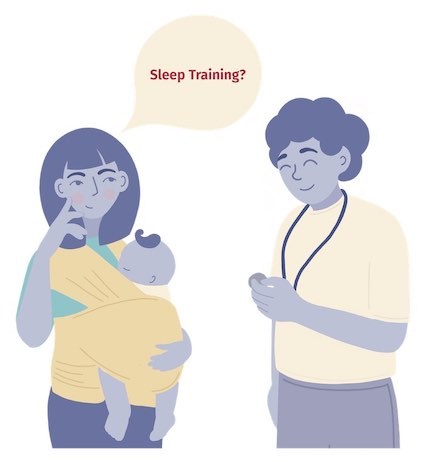
Child sleep consultants can also help you decide how to approach sleep training. Sleep training involves teaching babies to fall asleep on their own, and there are a variety of different methods including:
- Rocking your baby to sleep each night and gradually decreasing the time you spend rocking
- Sitting in your baby’s room until they fall asleep, leaving the room and checking in on the baby at staggered intervals
- Letting your baby “cry it out”
These are only some of the many strategies available, and there’s no one-size-fits-all method for sleep training.
If you want to work with a child sleep consultant, check out who is available in your area (or to consult remotely) and research their credentials. Have they completed a pediatric sleep certification program? Do they have testimonials from clients? Do you know anyone who has used a child sleep consultant who might be able to tell you about the services and recommend a particular consultant?
Child sleep consultants can be expensive, with varying levels of consultation and support ranging from $100 to $1,000+. Many people find the price tag worth it, but it’s important to ensure you’re hiring a trained sleep consultant in order to get your money’s worth.
The Most Important Thing? Always Practice Safe Sleep Habits
It’s important for your baby to get enough sleep, but it’s absolutely crucial for your baby to sleep safely.
To that end, the American Academy of Pediatrics (AAP) has a number of guidelines for parents to follow. The following research-backed guidelines are designed to protect against Sudden Infant Death Syndrome (SIDS) or sleep-related infant deaths: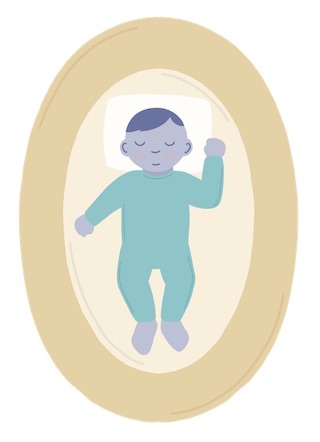
- Babies should be put to sleep on their backs until they are at least one year old.
- Babies should sleep on a firm surface, such as a mattress in a safety-approved crib with a fitted sheet on it.
- There should not be loose bedding or toys in the crib with a baby, as those can be a suffocation risk.
- If you choose to swaddle your baby, make sure you stop swaddling them during sleep by the time they are old enough to actively try to roll over (this usually happens around four months old, but can occur earlier).
- It’s recommended that parents share a room with their infant, but the AAP recommends that the infant have his or her own sleep surface. It’s very dangerous for infants to sleep on couches or armchairs.
- Make sure your baby is dressed appropriately for the room temperature and not at risk of overheating.
- Babies should be vaccinated according to AAP and CDC recommendations.
If you are at all worried about your baby’s sleeping quarters, your pediatrician will be able to answer any specific questions you have.
What is SIDS?
Sudden Infant Death Syndrome, also known as SIDS, is the tragic occurrence when a baby under the age of one suddenly dies in their sleep. According to the Centers for Disease Control and Prevention (CDC), SIDS is one of the top five causes of death in American babies.
Experts aren’t totally sure what causes this, but new research suggests it could be connected to body temperature and sleep arousal. That research — which was conducted using zebrafish and computer simulations of brain activity — posits that SIDS could be linked to “neuronal noise,” which basically amounts to random fluctuations of electricity in the neural network of your brain. Neuronal noise is constant when a person is asleep or awake.
This study connects the intensity of neuronal noise to body temperature and sleep arousals, or the period when someone “transitions from deep sleep to a mixture of very light sleep and/or partial wakefulness.” It suggests that higher body temperature may be associated with reduce neuronal noise, which can decrease the likelihood that an infant will wake up even if they’re having trouble breathing.
Researchers from the University of Virginia who are studying Sudden Infant Death Syndrome (SIDS) also found that infants who died under the supervision of people other than their parents were more likely to be placed in unsafe sleep positions and environments not recommended by pediatric health and safety experts.
The results of the study, which were published in The Journal of Pediatrics, found that of the more than 10,000 infant deaths examined, just over 13 percent occurred when a parent was not present.
The American Academy of Pediatrics has some guidelines for parents looking to create a safe sleeping environment for children under one year of age, which they think will help reduce the likelihood of SIDS. Among other recommendations, babies should be put to sleep on their backs, on a firm surface, away from soft objects and loose bedding, and in a room that is not too hot. Read the full guidelines here.
Babies and Sleep: The Bottom Line
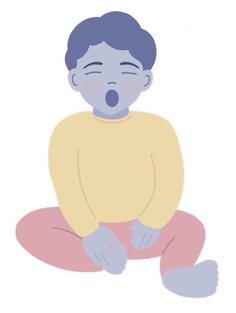 The amount of sleep your baby needs will change with their age, as will the number of naps they need per day and the length of time they spend awake.
The amount of sleep your baby needs will change with their age, as will the number of naps they need per day and the length of time they spend awake.
Many babies aged three to six months will be able to sleep for up to five hours at a time. You might find that your baby experiences sleep regressions at various points of development, which can be caused by things like growth spurts and increased interest in the world around them.
RELATED: Best Mattress for Toddlers
Watch out for signs that your baby is not getting enough sleep, such as constant yawning, fussiness, and waking up groggy. Your baby might be sleeping poorly due to environmental reasons (e.g. street noise or a cold room) or an inconsistent schedule.
Experts recommend sticking to a bedtime routine and regular sleep- and wake-up times. If you are struggling with your baby or toddler’s sleep, you can speak with your pediatrician or consider working with a sleep consultant. And of course, make sure you are following the latest safety guidelines for infant sleep.
While it may seem that placing your baby alone in their crib is keeping them from being comfortable, you’re really keeping him/her safe. While parents are often looking for the best pillow or coziest comforter, the best sleep for a baby is what the AAP recommends.
Further Resources:
Stanford Children’s Health — Infant Sleep
Cleveland Clinic — Healthy Sleep Habits For Children
Sleep.org — The New Parents’ Guide To Getting More Sleep
Mayo Clinic — Helping Baby Sleep Through The Night
HealthyChildren.org — Baby Sleep
Featured image: Krystyna Taran/Shutterstock

